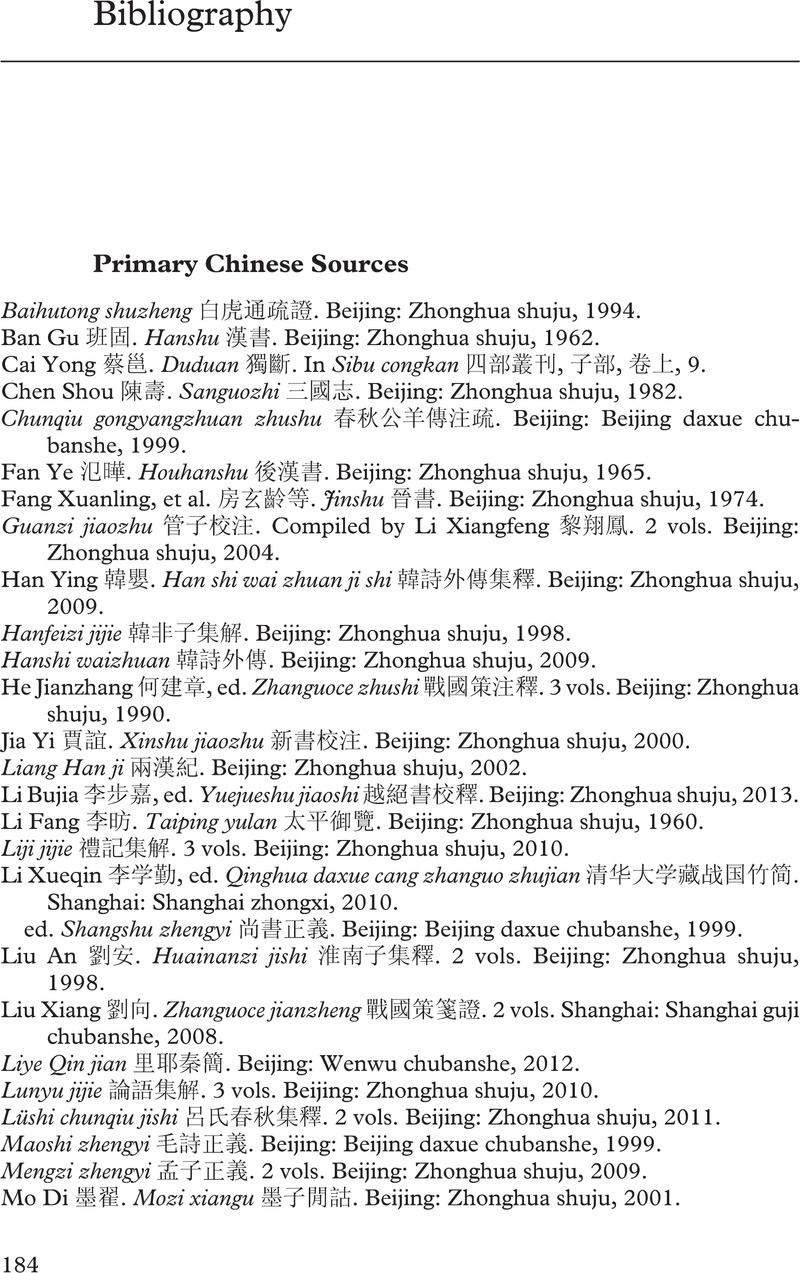Book contents
- Designing Boundaries in Early China
- Designing Boundaries in Early China
- Copyright page
- Dedication
- Contents
- Maps
- Acknowledgments
- Chronology
- Preamble
- 1 The Basis of Ancient Borders
- 2 The Visual Modeling of Space in Text and Map
- 3 Movement and Geography
- 4 The Perception of the “State”: The Internal Definition of Sovereign Space
- 5 The Perception of the “Enemy”: The External Definition of Sovereign Space
- 6 Transgressions: Rupturing the Boundaries Between Sovereignties
- Conclusion
- Bibliography
- Index
- References
Bibliography
Published online by Cambridge University Press: 19 November 2021
- Designing Boundaries in Early China
- Designing Boundaries in Early China
- Copyright page
- Dedication
- Contents
- Maps
- Acknowledgments
- Chronology
- Preamble
- 1 The Basis of Ancient Borders
- 2 The Visual Modeling of Space in Text and Map
- 3 Movement and Geography
- 4 The Perception of the “State”: The Internal Definition of Sovereign Space
- 5 The Perception of the “Enemy”: The External Definition of Sovereign Space
- 6 Transgressions: Rupturing the Boundaries Between Sovereignties
- Conclusion
- Bibliography
- Index
- References
Summary

- Type
- Chapter
- Information
- Designing Boundaries in Early China , pp. 184 - 196Publisher: Cambridge University PressPrint publication year: 2021



